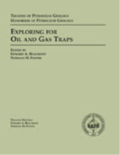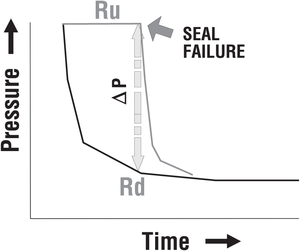Difference between revisions of "Fault seal breakdown during production"
m (→See also: link) |
Cwhitehurst (talk | contribs) m (added Category:Treatise Handbook 3 using HotCat) |
||
| (13 intermediate revisions by 3 users not shown) | |||
| Line 6: | Line 6: | ||
| part = Predicting the occurrence of oil and gas traps | | part = Predicting the occurrence of oil and gas traps | ||
| chapter = Evaluating top and fault seal | | chapter = Evaluating top and fault seal | ||
| − | | frompg = 10- | + | | frompg = 10-44 |
| − | | topg = 10- | + | | topg = 10-44 |
| author = Grant M. Skerlec | | author = Grant M. Skerlec | ||
| link = http://archives.datapages.com/data/specpubs/beaumont/ch10/ch10.htm | | link = http://archives.datapages.com/data/specpubs/beaumont/ch10/ch10.htm | ||
| Line 14: | Line 14: | ||
| isbn = 0-89181-602-X | | isbn = 0-89181-602-X | ||
}} | }} | ||
| − | Changes in pressure differentials across faults can change seal behavior. A cross-sealing fault is cross sealing to a finite column of | + | Changes in pressure differentials across faults can change seal behavior. A [[cross-sealing fault]] is cross sealing to a finite column of [[hydrocarbon]]s. As the [[Buoyancy pressure|buoyant pressure]] increases at the crest of the [[hydrocarbon column]], the buoyant pressure will ultimately exceed the [[displacement pressure]] of the fault zone and the fault will [[Cross-leaking faults|cross-leak]].<ref name=ch10r76>Smith, D. A., 1966, [http://archives.datapages.com/data/bulletns/1965-67/data/pg/0050/0002/0350/0363.htm Theoretical considerations of sealing and non-sealing faults]: AAPG Bulletin, vol. 50, no. 2, p. 363–374.</ref><ref name=ch10r10>Buck, S., Robertson, G., 1996, Fault seal behavior at Beryl field, UK North Sea: observations from 20 years of production, drilling and injection data: AAPG Annual Meeting Abstracts, San Diego, May 19–22, p. A20.</ref> |
==Pressure differentials and leakage== | ==Pressure differentials and leakage== | ||
| Line 20: | Line 20: | ||
==Example== | ==Example== | ||
| − | |||
| − | [[file:evaluating-top-and-fault-seal_fig10-34.png|thumb|{{figure number| | + | [[file:evaluating-top-and-fault-seal_fig10-34.png|300px|thumb|{{figure number|1}}Pressure depletion curves for two wells separated by an initially cross-sealing fault.]] |
| + | |||
| + | [[:file:evaluating-top-and-fault-seal_fig10-34.png|Figure 1]] shows the pressure depletion curves for two wells separated by an initially cross-sealing fault. The pressure depletion curve for well A is shown in light gray (top); that for well B, in black (bottom). The buoyant pressure at the crest of the oil column against the fault seal in well A remains constant as the pressure in well B decreases. The pressure differential (AP) increases until the displacement pressure of the fault zone is exceeded and the fault begins to cross-leak. A fault in the Beryl field has broken down during production.<ref name=ch10r10 /> A fault in the Akaso field, Nigeria, may have undergone this type of breakdown with a differential pressure of [[pressure::4137 kPa]] (600 psi).<ref name=ch10r40>Jev, B. I., C. H. Kaars-Sijpesteign, M. P. A. M. Peters, N. W. Watts, and J. T. Wilkie, 1993, [http://archives.datapages.com/data/bulletns/1992-93/data/pg/0077/0008/1350/1389.htm Akaso field, Nigeria: use of integrated 3-D seismic, fault-slicing, clay smearing and RFT pressure data on fault trapping and dynamic leakage]: AAPG Bulletin, vol. 77, no. 8, p. 1389–1404.</ref> | ||
==See also== | ==See also== | ||
| − | |||
* [[Fault control on hydrocarbon distribution]] | * [[Fault control on hydrocarbon distribution]] | ||
* [[Reservoir simulations and field unitization]] | * [[Reservoir simulations and field unitization]] | ||
| + | * [[Cross-sealing faults]] | ||
| + | * [[Cross-leaking faults]] | ||
==References== | ==References== | ||
| Line 39: | Line 41: | ||
[[Category:Predicting the occurrence of oil and gas traps]] | [[Category:Predicting the occurrence of oil and gas traps]] | ||
[[Category:Evaluating top and fault seal]] | [[Category:Evaluating top and fault seal]] | ||
| + | [[Category:Treatise Handbook 3]] | ||
Latest revision as of 15:21, 30 March 2022
| Exploring for Oil and Gas Traps | |

| |
| Series | Treatise in Petroleum Geology |
|---|---|
| Part | Predicting the occurrence of oil and gas traps |
| Chapter | Evaluating top and fault seal |
| Author | Grant M. Skerlec |
| Link | Web page |
| Store | AAPG Store |
Changes in pressure differentials across faults can change seal behavior. A cross-sealing fault is cross sealing to a finite column of hydrocarbons. As the buoyant pressure increases at the crest of the hydrocarbon column, the buoyant pressure will ultimately exceed the displacement pressure of the fault zone and the fault will cross-leak.[1][2]
Pressure differentials and leakage
Pressure depletion during production can create large pressure differentials across a fault and consequent leakage. This process occurs when the pressure depletion is sufficiently rapid, or the fault has sufficiently low permeability, to cause a large pressure differential across the fault. The change from sealing to leaking is not caused by any mechanical rupturing but simply by the relative change in buoyant pressure vs. displacement pressure.
Example
Figure 1 shows the pressure depletion curves for two wells separated by an initially cross-sealing fault. The pressure depletion curve for well A is shown in light gray (top); that for well B, in black (bottom). The buoyant pressure at the crest of the oil column against the fault seal in well A remains constant as the pressure in well B decreases. The pressure differential (AP) increases until the displacement pressure of the fault zone is exceeded and the fault begins to cross-leak. A fault in the Beryl field has broken down during production.[2] A fault in the Akaso field, Nigeria, may have undergone this type of breakdown with a differential pressure of pressure::4137 kPa (600 psi).[3]
See also
- Fault control on hydrocarbon distribution
- Reservoir simulations and field unitization
- Cross-sealing faults
- Cross-leaking faults
References
- ↑ Smith, D. A., 1966, Theoretical considerations of sealing and non-sealing faults: AAPG Bulletin, vol. 50, no. 2, p. 363–374.
- ↑ 2.0 2.1 Buck, S., Robertson, G., 1996, Fault seal behavior at Beryl field, UK North Sea: observations from 20 years of production, drilling and injection data: AAPG Annual Meeting Abstracts, San Diego, May 19–22, p. A20.
- ↑ Jev, B. I., C. H. Kaars-Sijpesteign, M. P. A. M. Peters, N. W. Watts, and J. T. Wilkie, 1993, Akaso field, Nigeria: use of integrated 3-D seismic, fault-slicing, clay smearing and RFT pressure data on fault trapping and dynamic leakage: AAPG Bulletin, vol. 77, no. 8, p. 1389–1404.
